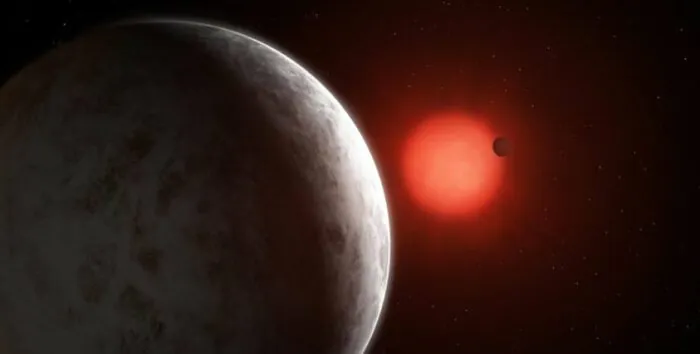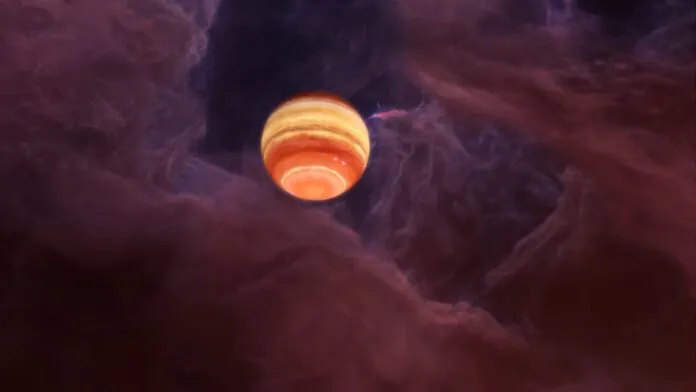© ROOT-NATION.com - Use of content is permitted with a backlink.
NASA’s Kepler Space Telescope has discovered a twin of Jupiter, despite the fact that the instrument stopped working four years ago.
An international team of astrophysicists using NASA’s Kepler Space Telescope, which shut down in 2018, has discovered a Jupiter-like exoplanet 17,000 light-years from Earth, making it the most distant exoplanet ever discovered by Kepler. The exoplanet, officially designated K2-2016-BLG-0005Lb, was discovered in data obtained by Kepler in 2016. During its existence, Kepler has recorded more than 2,700 planets, which have now been confirmed.
“Kepler was also able to continuously observe the weather or daylight, which allowed us to accurately determine the mass of the exoplanet and its orbital distance from the parent star,” said Eamon Kerins, an astronomer at the University of Manchester in the UK. “It is essentially the identical twin of Jupiter in terms of its mass and position relative to the Sun, which is about 60% of the mass of our own Sun.”
The team used a phenomenon known as gravitational microlens to detect an exoplanet. Due to this phenomenon, which was predicted by Einstein’s theory of relativity, objects in space can be seen and studied more closely when light from a background star is distorted and thus amplified by the gravity of a nearby massive object. Hoping to use the distorted light of a distant star to detect the exoplanet, the team used Kepler’s three-month observations of the sky where the planet is located.

“To see the effect, you need an almost perfect alignment between the planetary system in the foreground and the star in the background,” Kerins added in the same statement. “The probability that the planet affects the background star is in the tens to hundreds of millions against one. But there are hundreds of millions of stars at the center of our galaxy. That’s why Kepler just watched them for three months.”
The team then worked with Ian MacDonald, another astronomer at the University of Manchester, who developed a new search algorithm. Together, they were able to identify five candidates in the data, one of which most clearly showed signs of an exoplanet. Other terrestrial observations of the same area of the sky confirmed the same signals that Kepler identified about a possible exoplanet.
In addition to the excitement of discovering exoplanets with an instrument that is no longer used, the team’s work is notable for the fact that Kepler was not designed to detect exoplanets using this phenomenon. However, it is important to note that in 2016, Kepler’s mission was extended. In 2013, after two failures of the jet wheel, it was proposed to use Kepler for the K2 mission “Second Light”, during which the telescope will detect potentially living exoplanets. This extension was approved in 2014, and the mission was extended far beyond the expected end date, until the fuel was finally depleted on October 30, 2018.
“Kepler was never intended to search for planets by microlensing, so it’s surprising that he did just that,” Kerins said, adding that future instruments such as NASA’s Nancy Grace Roman Space Telescope and the European Space Agency’s Euclid mission could be able to use microlens to study exoplanets and be able to continue such research.
You can also help Ukraine fight with Russian occupants via Savelife or via an official page of the National Bank of Ukraine.
Read also:
- Amazon has made the «largest in history» order to launch rockets
- Invasion of Ukraine: The Air Force is doing its work, but without NATO the disaster is unavoidable. Here’s why


